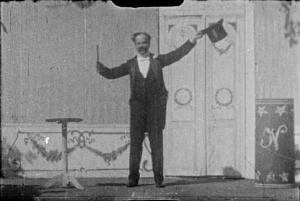Gallery
All Pictures (3)Biography
Julius Gustav Neubronner was born on February 8, 1852 in Kronberg/Taunus. His father was a pharmacist, his mother came from a family of actors and was the sister of the singer Johanna Sophie Löwe, who was popular throughout Germany at the time. Together with his two sisters, Julius Neubronner was initially educated at home, then attended the grammar school in Weilburg from 1864, where he completed his schooling with the middle school leaving certificate. Before continuing his schooling at the Realgymnasium in Wiesbaden, he completed a one-year apprenticeship in his father's pharmacy, but did not officially complete his apprenticeship as a pharmacist's assistant until 1873 - after finishing school and his military service. Three years later, he took up pharmacy studies in Giessen, and after graduating, went on to study chemistry in 1878, first at the Royal University of Berlin and then in Heidelberg. He received his doctorate in 1879. In 1886, he took over his father's pharmacy and its carrier pigeons for transporting prescriptions and medicines.
In addition to his pharmaceutical training, Neubronner had a keen interest in amateur photography from a young age and experimented with a camera built by his father and exposure times. Photography remained an important hobby during his studies, and he set up a photo studio with friends. In 1903 he acquired his first film camera, an Ernemann "Kino" for 17.5mm film with center perforation. Between 1903 and 1920, he was one of the first in the Rhine-Main region to use the camera to record historical events and everyday life in his family. He also shot short sketches, staged by himself and his family on a stage built in the garden of his house. All of Julius Neubronner's surviving films are held by the DFF - Deutsches Filminstitut & Filmmuseum in Frankfurt/Main, where they were restored in the 1990s and digitized in high resolution for presentation in the cinema in 2019.
In 1909, Julius Neubronner gained fame beyond Germany with the carrier pigeon photography he invented and patented in 1908. He presented his invention, carrier pigeons equipped with small photo cameras that enabled aerial photography, both in Dresden at the International Photographic Exhibition and at the International Airship Exhibitions in Frankfurt/Main and Paris. During World War I, carrier pigeon photography was used, albeit unsuccessfully, on an experimental basis for aerial reconnaissance.
Neubronner also demonstrated inventiveness in the development of dry adhesive strips, which facilitated the gluing of photographic glass plates for Laterna Magica shows. In 1905 he founded the Neubronner GmbH & Co. KG, a company which was eventually taken over by his youngest son Carl Neubronner (1896-1997), who also gained some notoriety for his model airplane experiments, and which still exists today.
Julius Neubronner, who was one of the pioneers of amateur photography, died on April 17, 1932.
